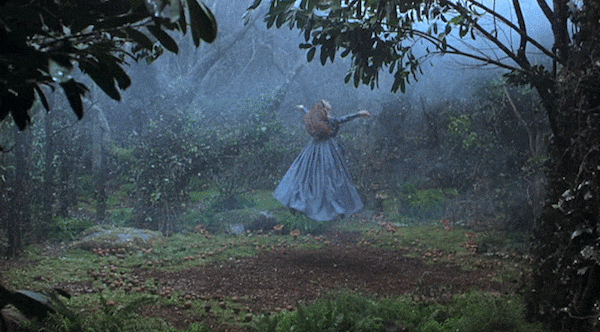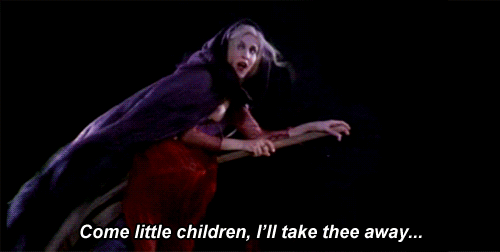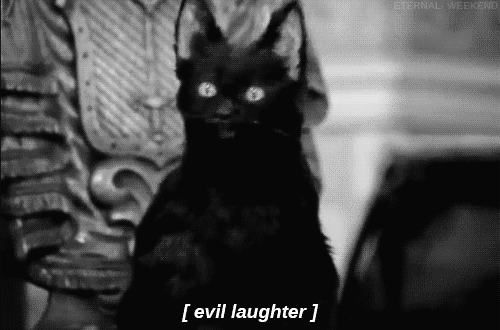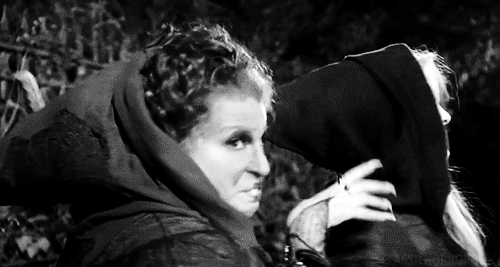While witches have played a huge role in human lore since the beginning of recorded history, it wasn’t until the 15th century that the actual hunting of witches really came into play. Particularly in Europe, the sudden influx of perceived witches was a source of mass panic amongst those living in religious societies.

While anyone growing up learning American History knows of the Salem Witch Trials beginning in 1692, fewer might know that witch-hunting goes back even further. The persecution of witches had always been widespread, but it wasn’t until the 1484 publication of the Summis Desiderantes Affectibus that the “hunts” became more regulated.
Summis Desiderantes Affectibus is Latin for “desiring with supreme ardor,” and was written by Pope Innocent VIII. Within it, explicit permission to find and prosecute witches hidden throughout Germany —particularly those who stood as an enemy to the Catholic church (aka all of them). The book even influenced the Spanish Inquisition, since it gave permission for the “correcting, imprisoning, punishing, and chastising” of witches.
In 1487, a book called the Malleus Maleficarum, also known as “Hammer of Witches” was another book published in Germany, this time by clergyman Heinrich Kramer, which further endorsed the extermination of witches. Within its pages were detailed descriptions of what it meant to be a witch, how one was to make deals with the Devil, and how to go about obtaining confessions from the accused through different methods of torture.
The Hammer of Witches contained excerpts from the Summis Desiderantes, and consisted of three sections: Theoretical witchcraft from a philosophical and theological point of view, the process of “witch recruitment” and their subsequent powers, and instructions on how to prosecute a witch.
With that in mind, what made a person most likely to be suspected of witchcraft?
1. Be a Woman
According to the Hammer of Witches, women are “prone to believing, and because the demon basically seeks to corrupt the faith, he assails them in particular.” On top of that, women are seen as being more lustful, and are “evil as a result of nature because she doubts more quickly in the faith.”
Of course, it comes as no surprise that more than 90% of those accused of Witchcraft in England were women. Sorry, ladies.

2. Have Unusual Skin Patterns
Are you prone to an extra mole or two, particularly under your eyelids or arms, or maybe hidden beneath your hair? Sorry, but those aren’t actually moles — they’re a witch’s teat. That’s where your familiar nurses from your body. Don’t try and hide it.
If not a teat, then at least a witch’s mark, whose appearance can take the form of a mole, a freckle, a birthmark, or any kind of skin discoloration at all. Such supposedly occult blemishes were so common that modern historians even attribute some of these “witch’s marks” to simply being a case of lyme disease (as if a simple mole or birthmark wasn’t already outlandish enough).

3. Be a Little Less Than Pleasant With Your Neighbors
What’s less Christian than being a little crotchety? Ephesians 4:31-32 even states: “Let all bitterness and wrath and anger and clamor and slander be put away from you, along with all malice. Be kind to one another, tenderhearted, forgiving one another, as God in Christ forgave you.”
In short, watch out, because your nasty attitude could be one of the main alarm bells that you’ve probably danced with the devil. After all, the devil loves chaos and irreverence.
Take Goody Garlick in 1657, for example, who was accused of witchcraft based on her overall reputation amongst the other townsfolk. Not to mention, working as a midwife, it was natural that she would be accused of something demonic when the mother whose baby she just helped deliver fell gravely ill. This is probably because, according to the Hammer of Witches, witch-midwives were a scourge on good Christian women and sought only to feed on newborn children, amongst other things:
“Witch-midwives were accused of causing miscarriages; however, if they allowed a child to be born, they would allegedly either feast on the child or offer it to the evil spirits, allowing the witches to infect the child and turn it into a witch.”

Can anyone say “vampire witches”?
4. Have Conversations With Your Cat, Baby Voice or Not
If you’ve been known to speak with your pets as if they were your own children, prepare for a trial. Naturally, by speaking with your pet, you’re actually communicating with a familiar, of which you probably only received after signing the devil’s book and becoming one of his servants.
Your familiar, to whom you think you’re cooing kind compliments of her cute face, is actually hearing only one thing, probably: “Hey, thanks for helping me bewitch that man down the street. Wasn’t it so funny when his teeth fell out? We’re awesome. High five, kitty.”

5. Be Associated With Another Accused Witch
Are you the social butterfly of your small, Puritan town? Big mistake, lady, because guess what: your best friend was just accused of being a witch and is going to trial soon. Even if she doesn’t call you out as being a member of her coven in an attempt to save her own skin, the fact you’ve been seen in her presence (even once) means you’re probably also in cahoots with the devil.
A good example would be Rebecca Nurse during the Salem Witch trials, who was accused and eventually found not guilty — until she was quoted as referring to another accused witch, Goody Hobbs, as being “one of us.” Naturally, she meant, “one of us” in terms of being a prisoner, and not a fellow witch in her coven, but the Salem judge wasn’t going to have any of that.

In an excerpt from The Salem Witch Trials: A Reference Guide, Thomas Fiske, a jury foreman, was quoted as thus:
When the verdict not guilty was, the honoured court was pleased to object against it, saying to them, that they think they let slip the words, which the prisoner at the bar spake against herself which were spoken in reply to Goodwife Hobbs and her daughter, who had been faulty in setting their hands to the devil’s book, as they have confessed formerly; the words were ‘what, do these persons give in evidence against me now, they used to come against us.’
After the honoured court had manifested their dissatisfaction of the verdict, several of the jury declared themselves desirous to go out again, and thereupon the honoured court gave leave; but when we came to consider the case, I could not tell how to take her words, as evidence against her, till she had a further opportunity to put her sense upon them, if she would take it; and then going into court, I mentioned the aforesaid, which by one of the court were affirmed to have been spoken by her, she being then at the bar, but made no reply, nor interpretation of them; whereupon these words were to me principal evidence against her.
But, if you’d rather not read that large paragraph of old Puritan speech, let me translate:
“So, uh, basically, Goody Nurse said something about showing camaraderie with the other women we’ve all accused of being witches because they’re basically going through hell right now, but I’m not actually sure if she meant it in a ‘supportive friend’ kind of way or a ‘witch coven friend’ kind of way. So to cover my own ass, let’s just find her guilty. Cool? Alright.”
Despite the Salem Witch Trials occurring in 1692, the last witch to be executed in England was killed eight years prior, in 1684. That is to say, the Salem Trials occurred on the tail end of the overall witch-hunt frenzy across the world, and luckily even they only lasted until about 1693.
Apparently, the largest driving force of reason behind halting the hunts was the most hopeful thing in the entire world: people began to think it was all getting a little out of hand, and maybe some mistakes had been made. It’s a relief to know, then, that the frenzy didn’t end when there simply weren’t any women left to crucify — the people came to their senses and asked themselves, “is this really worth it?”
(My answer: Nah.)
If you want to read more about witches and how to spot them, check out these resources:
9 Reasons You Might Have Been Suspected of Witchcraft in 1692
10 Signs That She’s a Witch
Kelsey graduated from Boise State University with a BA in Visual Arts, and is currently working as a freelance writer, while doodling anime on the side with one hand and petting cats with the other.

EXCELLENT article, Kelsey!!!! Holy schmolie, you had me intrigued, entertained, and fascinated. Not to mention laughing and disgusted at the same time. Also ironic how they want you to be kind, but not too social, or you’d be a witch. And the talking to your pets…oh boy. Thank goodness this is 2017. I’d be doomed back in the Witch Hunt Era! lol THANK YOU for another outstanding post!!!
Thanks! I had so much fun writing it– it also helped that I watched a Netflix documentary about the witch hunts in the UK over the weekend, haha! I have so many ideas for future posts, I’m looking forward to it all!!
And in terms of talking to animals– same, same, same. I live alone except for my cat, and she’s my biggest conversational partner, hahaha!
LOL! I work from home and am alone 95% of my days so…yeah. Being a Chatty Kathy by nature means like it or not, my cats are the ones I talk to!